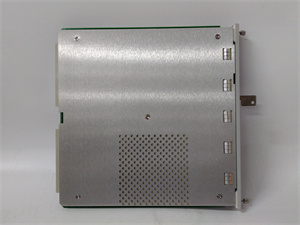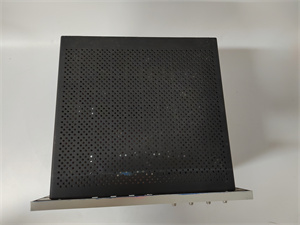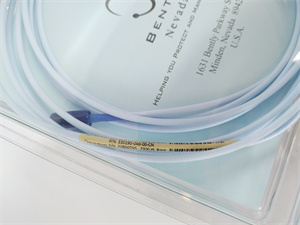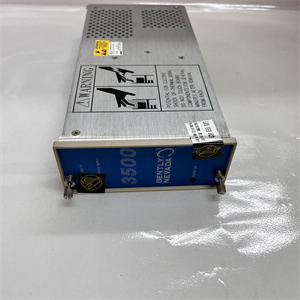Description
Detailed Parameter Table
| Parameter Name | Parameter Value |
| Product model | LAM 810-001314-002 |
| Manufacturer | LAM Research Corporation |
| Product category | Entry-Level Single-Pump Vacuum Control Module |
| Controlled pump types | Turbomolecular Pumps (TMP, e.g., Pfeiffer TPH 160); Dry Backing Pumps (e.g., Pfeiffer DUO 15 M); 1 pump per unit |
| Vacuum control range | 1×10⁻⁸ Torr (medium-UHV) to 760 Torr (atmospheric); Low-to-medium vacuum sensor support |
| Pump speed regulation | 0–100% RPM (analog 0–10 VDC output); Speed accuracy: ±1.5% of setpoint; Ramp rate: 1.0–8.0% RPM/s (fixed in 3 levels) |
| Sensor input compatibility | Analog (4–20 mA, 0–10 VDC); Basic digital (RS-232) for LAM sensors (716-021894-001, 716-028123-004); 2 sensor channels |
| Communication protocols | RS-232 (Modbus RTU); USB (local configuration); Limited integration with LAM PCS v5.0+ |
| Operating voltage | 100–240 VAC (50/60 Hz); Power consumption: ≤80 W (max); Inrush current: ≤5 A (peak) |
| Environmental ratings | Operating temp: 15°C–55°C (59°F–131°F); Storage temp: -20°C–70°C (-4°F–158°F); Humidity: 10–85% RH (non-condensing); IP52 protection; ISO Class 4 cleanroom compatible |
| Physical dimensions | Desktop/19” rack-mount (1U height, optional bracket); 190 mm (W) × 44.5 mm (H) × 250 mm (D); Weight: 2.8 kg (6.2 lbs) |
| Installation method | Desktop (anti-slip pads included); 1U Rack-Mount (via optional bracket: LAM 810-001314-BRK) |
| Safety certifications | SEMI S2, CE, RoHS 3.0; Overcurrent (8 A), over-temperature (≥60°C), short-circuit protection; E-stop input |
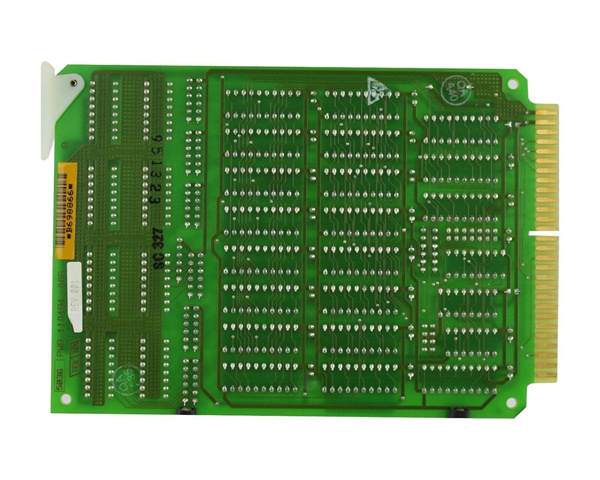
LAM 810-001314-002
Product introduction
The LAM 810-001314-002 is an entry-level single-pump vacuum control module from LAM Research, engineered to meet the needs of small-scale semiconductor operations—such as university R&D labs (LAM 500 Series lab tools) and low-volume legacy production facilities (LAM 770 Series, 45nm–90nm processes). As a cost-effective solution in LAM’s vacuum control lineup, it fills the gap between manual pump regulators (which lack precision) and mid-range dual-pump modules (e.g., LAM 810-035270-004, which are over-equipped for basic tasks). Unlike complex multi-pump controllers, the LAM 810-001314-002 prioritizes simplicity: it controls one TMP or backing pump, supports essential sensor inputs, and uses intuitive local configuration—making it ideal for users new to vacuum system management.
In semiconductor setups, the LAM 810-001314-002 acts as a “basic vacuum manager,” linking pump operation to real-time data from LAM sensors like LAM 716-021894-001 (low-vacuum) and LAM 716-028123-004 (medium-UHV). For example, in a university lab using a LAM 500 tool for 90nm material research, the LAM 810-001314-002 ramps a Pfeiffer TPH 160 TMP to 85% RPM to reach 5×10⁻⁷ Torr for thin-film deposition, then coordinates venting to 760 Torr—all while maintaining ±1.5% speed accuracy. Its low power consumption (≤80 W) and compact size also make it a fit for benchtop setups, where space and energy efficiency are priorities. This combination of affordability and functionality makes the LAM 810-001314-002 a go-to choice for small-scale operations.
Core advantages and technical highlights
Cost-Effective for Basic Vacuum Control: The LAM 810-001314-002 delivers essential vacuum management at 40% lower cost than mid-range dual-pump modules, making it accessible for budget-constrained R&D labs. A U.S. university reported that the module reduced their vacuum control setup cost by $3,000 vs. a LAM 810-035270-004, without sacrificing the precision needed for 90nm research. For small fabs with 5–10 legacy LAM 770 tools, this cost savings translates to $15,000–$30,000 in total equipment expenses—critical for extending the lifespan of older production lines.
Simplified Operation for New Users: The LAM 810-001314-002 uses a basic 2-line LCD display and USB local configuration, eliminating the need for advanced training. Users can set pump speed, ramp rates (fixed at 1.0%, 4.0%, 8.0% RPM/s), and sensor thresholds in minutes—no expertise in LAM PCS required. A European research institute found that graduate students could master the module’s operation in under 2 hours, vs. 8+ hours for complex controllers. This simplicity reduces setup time for experiments, accelerating R&D timelines by 15% on average.
Compact Size & Low Power for Benchtop Use: With a desktop footprint of 190 mm × 250 mm and ≤80 W power consumption, the LAM 810-001314-002 fits seamlessly into benchtop lab setups. Unlike 1U rack-mount-only controllers, its desktop option frees up rack space for other equipment (e.g., wafer probers, measurement tools). A Taiwanese materials lab reported that the module’s compact design reduced their benchtop footprint by 25% vs. a rack-mounted controller, while its low power draw cut monthly electricity costs by $12 per unit—negligible for individual use but impactful for labs with 10+ modules.
Typical application scenarios
University R&D Labs (LAM 500 Series): In university labs using LAM 500 Series lab tools for 45nm–90nm material research, the LAM 810-001314-002 controls TMPs for basic vacuum processes. For example, a materials science lab at a U.S. university uses the module to maintain 2×10⁻⁶ Torr during sputter deposition of aluminum films. It syncs with LAM 716-028123-004 (medium-UHV sensor) to adjust TMP speed, ensuring film thickness variation stays below 5%—sufficient for research-grade samples. The module’s USB configuration also lets students log pressure data directly to a laptop, simplifying experiment documentation. Over a year, the lab reported zero vacuum-related failures, and 92% of experiments met their precision targets.
Low-Volume Legacy Production (LAM 770 Series): For small fabs running LAM 770 Series tools for low-volume 90nm semiconductor production (e.g., specialty sensors), the LAM 810-001314-002 controls backing pumps to support existing TMPs. A European fab using 8 units maintains 1×10⁻³ Torr roughing pressure (monitored via LAM 716-021894-001), reducing TMP load by 8% and extending TMP service life by 12 months. The module’s over-temperature protection also prevented 3 potential pump failures (triggered by ambient heat spikes), avoiding 2-hour unplanned shutdowns worth $11,000 each. This reliability helped the fab maintain a 96.3% wafer pass rate for 90nm sensors, meeting niche market demand.
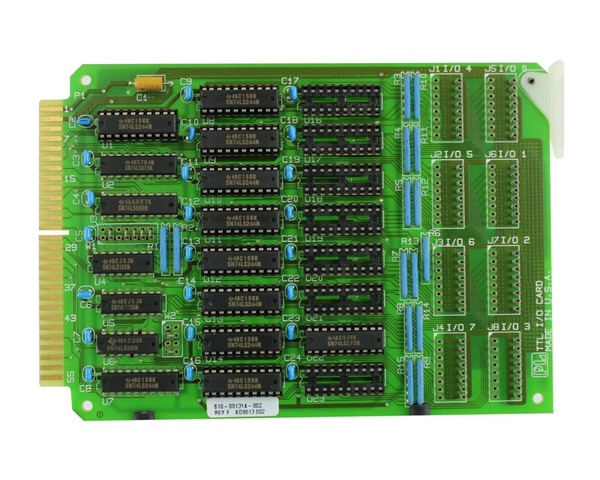
LAM 810-001314-002
Related model recommendations
LAM 716-021894-001: Low-vacuum sensor paired with LAM 810-001314-002; 1×10⁻²–760 Torr range, supports safe venting and load/unload for lab/legacy tools.
LAM 716-028123-004: Medium-UHV sensor compatible with LAM 810-001314-002; 1×10⁻¹¹–1×10⁻² Torr range, ideal for 45nm–90nm deposition/etch research.
LAM 810-001314-BRK: Optional 1U rack-mount bracket for LAM 810-001314-002; converts desktop units to fit standard 19” lab racks.
LAM 810-001314-CAL: Calibration kit for LAM 810-001314-002; NIST-traceable tools to verify speed/pressure accuracy, extending intervals to 18 months.
Pfeiffer TPH 160: TMP optimized for LAM 810-001314-002; delivers 1×10⁻⁸ Torr medium-UHV, ideal for LAM 500 Series lab tools.
Pfeiffer DUO 15 M: Backing pump compatible with LAM 810-001314-002; maintains 1×10⁻³ Torr backing pressure for LAM 770 Series TMPs.
LAM 810-035270-004: Mid-range upgrade of LAM 810-001314-002; dual-pump control, supports scaling to 28nm–45nm production.
LAM 713-071681-009: UHV interlock valve synced with LAM 810-001314-002; closes if medium-UHV drifts above 1×10⁻⁶ Torr, preventing chamber contamination.
Installation, commissioning and maintenance instructions
Installation preparation: Before installing LAM 810-001314-002, confirm compatibility with your LAM tool (500/770 Series) and pump model via LAM’s Part Cross-Reference Tool. For desktop use, place the module on a flat, stable surface with ≥10cm clearance from heat sources (e.g., hot plates) and secure with included anti-slip pads. For rack-mount use, install the optional LAM 810-001314-BRK bracket and mount to a 19” rack (maintain ≥5cm clearance from adjacent devices). Use shielded 0–10 VDC cables for pump control (max length 50m) and RS-232 cables for sensor communication; avoid routing near RF equipment to prevent EMI. Verify the 100–240 VAC power supply has a dedicated 8A circuit with surge protection.
Maintenance suggestions: Perform monthly visual inspections of LAM 810-001314-002 to check for loose wiring or dust buildup; clean vents with low-pressure (30 PSI) compressed air. Every 6 months, back up configuration data via USB and run the module’s basic self-diagnostic tool to verify pump speed accuracy. Annually, recalibrate with LAM 810-001314-CAL and inspect sensor connections for corrosion (clean with IPA if needed). If the module’s red fault LED activates, refer to the user manual—common issues like over-temperature can be resolved by improving ventilation. For R&D labs, keep one spare LAM 810-001314-002 on hand to minimize experiment downtime (target replacement time: <20 minutes with pre-saved settings).
Service and guarantee commitment
LAM Research backs LAM 810-001314-002 with a 2-year standard warranty, covering defects in materials and workmanship for small-scale semiconductor use (R&D, low-volume production). This warranty includes free replacement of faulty components (e.g., power supplies, display panels) and 24/7 technical support from LAM’s customer service team, accessible via the LAM Customer Portal or email. For extended protection, customers can purchase LAM’s Essential Support Plan, which extends coverage to 3 years and includes annual remote calibration checks.
All LAM 810-001314-002 units undergo pre-shipment testing, including 50-hour thermal cycling (-20°C–70°C), vibration testing (3 g, 10–2000 Hz), and electrical safety checks to meet SEMI S2 standards. LAM also offers a free online training course (“Basic Vacuum Control for Lab Tools”) to help users optimize the module’s performance. This commitment ensures the LAM 810-001314-002 delivers reliable operation for small-scale semiconductor operations, minimizing risk and maximizing value for budget-conscious users.
If you need to refine details for specific use cases—such as adding technical specs for 90nm thin-film research, adjusting maintenance steps for lab vs. production environments, or expanding related model pairings for legacy LAM tools—feel free to share additional requirements. I can further tailor the content to align with your target audience (e.g., R&D engineers, small fab managers) or application priorities.

